Results: The difference between heat exhaustion and heat stroke
Published on 05/27/2017
Summer means outdoor fun, ice cream, long days followed by warm nights, and the chance to stock up on some must-have vitamin D. However, it also means taking extra care to look after yourself and your family, including the family pet in the higher temperatures. When the body gets too hot, heat exhaustion can occur and if that’s not treated it can lead to something much more serious: heat stroke.
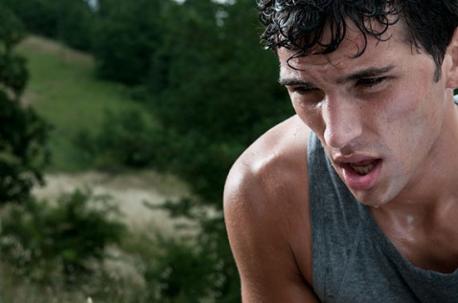
QUESTIONS
GO to COMMENTS
Comments
1.
1.
Heat exhaustion is a heat-related illness that can occur after you've been exposed to high temperatures, and it often is accompanied by dehydration. There are two types of heat exhaustion: 1. Water depletion. Signs include excessive thirst, weakness, headache, and loss of consciousness. 2. Salt depletion. Signs include nausea and vomiting, muscle cramps, and dizziness. Although heat exhaustion isn't as serious as heat stroke, it isn't something to be taken lightly. Without proper intervention, heat exhaustion can progress to heat stroke, which can damage the brain and other vital organs, and even cause death. What "heat exhaustion symptoms" are you familiar with?

Confusion
36%
526 votes
Dark-colored urine (a sign of dehydration)
22%
323 votes
Dizziness and or Fainting
50%
742 votes
Fatigue
44%
648 votes
Headache
42%
618 votes
Muscle or abdominal cramps
26%
385 votes
Nausea, vomiting, or diarrhea
34%
505 votes
Pale skin
23%
337 votes
Profuse sweating
37%
547 votes
Rapid heartbeat
34%
499 votes
all
25%
372 votes
none
18%
265 votes
2.
2.
If you, or anyone else, has symptoms of heat exhaustion, it's essential to immediately get out of the heat and rest, preferably in an air-conditioned room. If you can't get inside, try to find the nearest cool and shady place. After you've recovered from heat exhaustion, you'll probably be more sensitive to high temperatures during the following week. So it's best to avoid hot weather and heavy exercise until your doctor tells you that it's safe to resume your normal activities. If such measures fail to provide relief within 15 minutes, seek emergency medical help, because untreated heat exhaustion can progress to heat stroke. What "heat exhaustion treatments" are you familiar with?
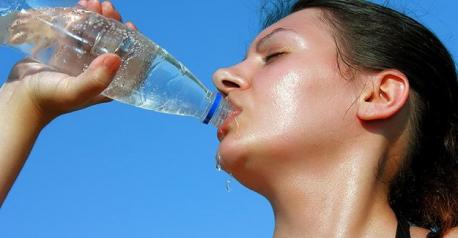
Drink plenty of fluid (avoid caffeine and alcohol).
50%
734 votes
Remove any tight or unnecessary clothing.
30%
437 votes
Take a cool shower, bath, or sponge bath.
38%
557 votes
Apply other cooling measures such as fans or ice towels.
35%
523 votes
all
40%
584 votes
none
15%
224 votes
3.
3.
Heat stroke is the most serious form of heat injury and is considered a medical emergency. If you suspect that someone has heat stroke (also known as sunstroke) call 911 immediately and give first aid until paramedics arrive. Heat stroke can kill or cause damage to the brain and other internal organs. Although heat stroke mainly affects people over age 50, it also takes a toll on healthy young athletes. Heat stroke results from prolonged exposure to high temperatures (usually in combination with dehydration) which leads to failure of the body's temperature control system. What "heat stroke symptoms" are you familiar with?
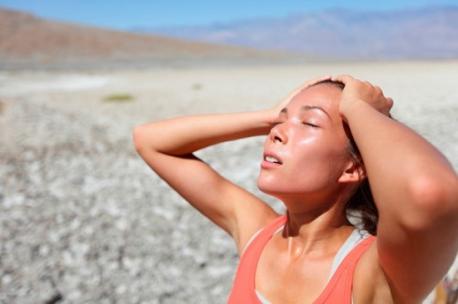
Throbbing headache
23%
347 votes
Dizziness and light-headedness
35%
524 votes
Lack of sweating despite the heat
22%
320 votes
Red, hot, and dry skin
23%
340 votes
Muscle weakness or cramps
22%
329 votes
Nausea and vomiting
29%
422 votes
Rapid heartbeat, which may be either strong or weak
24%
357 votes
Rapid, shallow breathing
22%
321 votes
Seizures
14%
208 votes
Unconsciousness
21%
316 votes
all
29%
436 votes
none
21%
314 votes
4.
4.
If you suspect that someone has a heat stroke, immediately call 911 or transport the person to a hospital. Any delay seeking medical help can be fatal. While waiting for the paramedics to arrive, initiate first aid. Move the person to an air-conditioned environment (or at least a cool, shady area) and remove any unnecessary clothing. If possible, take the person's core body temperature and initiate first aid to cool it to 101 to 102 degrees Fahrenheit. (If no thermometers are available, don't hesitate to initiate first aid.) What "heat stroke cooling strategies" are you familiar with?
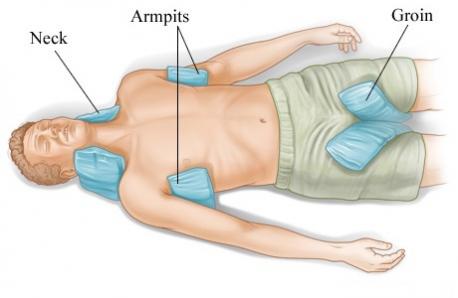
Fan air over the patient while wetting his or her skin with water from a sponge or garden hose.
24%
354 votes
Apply ice packs to the patient's armpits, groin, neck, and back. Because these areas are rich with blood vessels close to the skin, cooling them may reduce body temperature.
24%
353 votes
Immerse the patient in a shower or tub of cool water.
27%
395 votes
If the person is young and healthy and suffered heat stroke while exercising vigorously (what's known as exertional heat stroke) you can use an ice bath to help cool the body.
14%
204 votes
Do not use ice for older patients, young children, patients with chronic illness, or anyone whose heat stroke occurred without vigorous exercise. Doing so can be dangerous.
8%
121 votes
If emergency response is delayed, call the hospital emergency room for additional instructions.
16%
239 votes
all
28%
413 votes
none
29%
429 votes
5.
5.
What heat exhaustion and heat stroke prevention's are you familiar with?
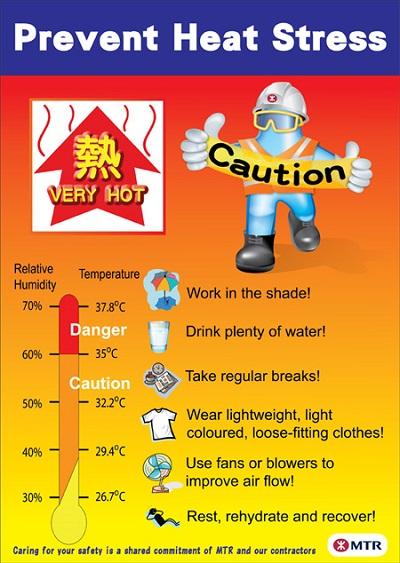
Wear lightweight, light-colored, loose-fitting clothing, and a wide-brimmed hat.
34%
497 votes
Use a sunscreen with a sun protection factor (SPF) of 30 or more.
27%
405 votes
Drink extra fluids. To prevent dehydration, it's generally recommended to drink at least eight glasses of water, fruit juice, or vegetable juice per day. Because heat-related illness also can result from salt depletion, it may be advisable to substitute an electrolyte-rich sports drink for water during periods of extreme heat and humidity.
41%
606 votes
Take additional precautions when exercising or working outdoors. The general recommendation is to drink 24 ounces of fluid two hours before exercise, and consider adding another 8 ounces of water or sports drink right before exercise. During exercise, you should consume another 8 ounces of water every 20 minutes, even if you don't feel thirsty.
25%
376 votes
Reschedule or cancel outdoor activity. If possible, shift your time outdoors to the coolest times of the day, either early morning or after sunset.
24%
362 votes
all
35%
518 votes
none
20%
297 votes
6.
6.
Have you ever had heat exhaustion or heat stroke?
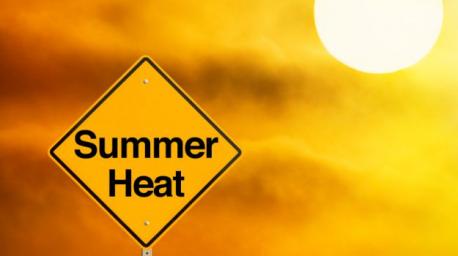
Heat exhaustion
26%
383 votes
Heat stroke
6%
94 votes
both
8%
116 votes
neither
60%
885 votes
COMMENTS


